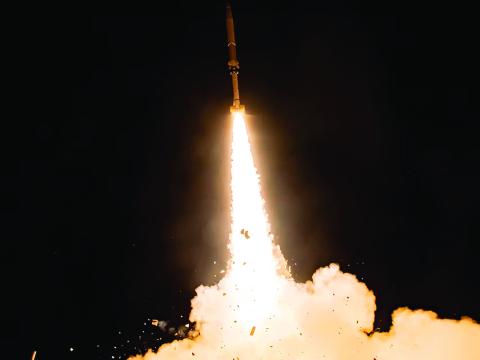GAO Calls Defense ISR Programs Fragmented, Wants Tighter Management
At a time when almost all of government is being squeezed by efforts to lower spending, a new report from a congressional watchdog agency strongly suggests that the Defense Department needs to do a better job of managing its intelligence, surveillance and reconnaissance (ISR) systems.
The Government Accountability Office (GAO) study, entitled “Intelligence, Surveillance and Reconnaissance: Actions Are Needed to Increase Integration and Efficiencies of DOD’s ISR Enterprise” (GAO 11-465), warns that the department must improve its control over disparate ISR efforts if it is to provide effective ISR support to the force.
Davi D’Agostino, the GAO’s Director of Homeland, Defense, Emerging Threats and Warfare, is the principal author of the GAO report. She explains that her office examined the more than $80 billion spent by the Pentagon on ISR in fiscal year 2010. “We looked at the various ISR ‘pots of money,’ and the source of the funding for ISR, and also how ISR seems to be fragmented across the department,” she relates.
As an example of how the fragmentation makes it difficult to account for how and why ISR funds are spent within DOD, D’Agostino points to the fact that the while “the Undersecretary of Defense for Intelligence (USD[I]) has oversight” as the Pentagon’s lead senior manager departmentwide for ISR, it is the Undersecretary of Defense for Acquisition, Technology and Logistics (ATL) who is in charge of all projects involving outer space, and unmanned aircraft systems that collect ISR data.
D’Agostino concludes that, because of this and other examples outlined in the report, the USD[I], which has been designated the ISR portfolio, “does not have the full visibility into the funding and all the investments into [the Defense Department’s] ISR enterprise.”
A key to the problem, says D’Agostino, is that at the uppermost levels, spending on most Pentagon ISR programs is divided between the Military Intelligence Program, totaling $27 billion in fiscal year 2010, and the National Intelligence Program, totaling $53.1 billion in FY 2010.
She labels as “fragmented” some of the current ISR activities, and lists nine agencies – some within the Defense Department, some within the intelligence community – that have a role in overseeing the department’s ISR capabilities.
“I think it makes it very challenging for them to have a handle on the whole picture,” she states.
The GAO report goes on to identify some programs that USD[I] considers “dual-use” assets, which fulfill both ISR and non-ISR missions (such as the Air Force’s airborne Reaper ISR system, the Navy’s P-3 Orion maritime patrol aircraft and the Defense Department’s biometrics program).
The agency says the Defense Department is unable to “readily identify all urgent ISR needs” related to warfighters, despite having spent nearly $25 billion between fiscal years 2005-2010 on what were called “urgent ISR capabilities sponsored by an ISR task force designed to help defeat improvised explosive devices.”
Pentagon officials also have told the GAO they have a problem tracking and reporting ISR spending on projects that are funded from multiple sources. Finally, both military and civilian intelligence officials cite difficulties in tracking costs related to the use of military personnel involved in ISR activities. This, despite the fact that the Air Force lists approximately 200 budget items containing at least some funding for military intelligence personnel, and the Army reports military intelligence personnel account for 62 percent of budget items funded from multiple sources.
GAO’s D’Agostino says it’s useful to look back on efforts in the 1990s to get a handle on the costs of battling terrorism in the search for possible solutions to the Pentagon’s ISR accountability woes.
“A lot of emerging areas are going to find this, because they aren’t going to have a lot of neatly packaged program elements, and they aren’t all pulled together,” she explains. “I view this as a similar situation. A lot of people were spending all this money on counterterrorism before 9/11, and we didn’t seem to have a handle on that. OMB [the Office of Management and Budget] developed a methodology about it to know how much of security do we count toward antiterrorism. Cybersecurity is in the same way; it’s challenging to devise a methodology to give you visibility across the department in an area like this.”
D’Agostino says being able to account for money spent for ISR will become even more important in years to come, because of pressure from Congress to reduce government spending. “The department is going to be needing to make difficult tradeoff decisions in its investments, and you really need to have a handle on where all of this funding is going.”
As is generally the case with GAO reports, the Defense Department was given an opportunity to respond to the ISR report, and recommendations made at its conclusion.
D’Agostino says the Defense Department has “partially concurred” with a GAO recommendation that the USD[I] collect financial data regarding ISR resource and investment decisions. “They say they do a lot of this informally,” she explains, “and we’re saying you should do it formally.”
She says the department has concurred with recommendations that they establish goals and timelines to insure “progress and accountability” on implementation of a defense intelligence enterprise architecture.
Finally, D’Agostino offers that the Defense Department has agreed with GAO’s recommendation that the agency expand the scope of the Secretary of Defense’s cost-saving efficiency study initiated last fall beyond ISR analysis centers, and now include ISR data collection activities.




Comments